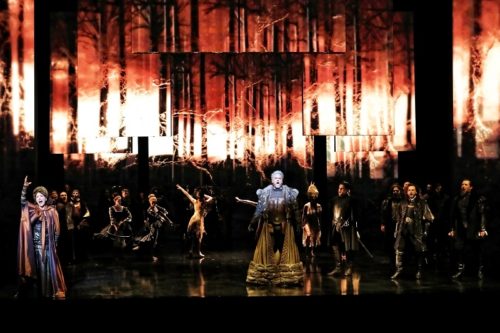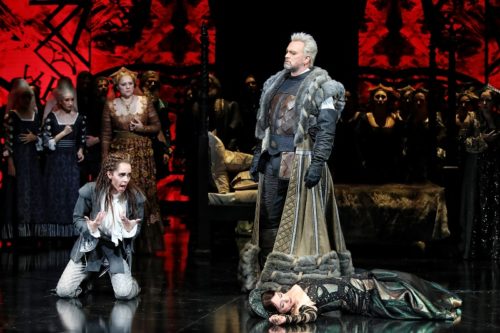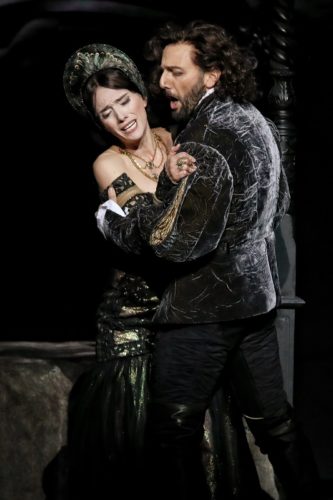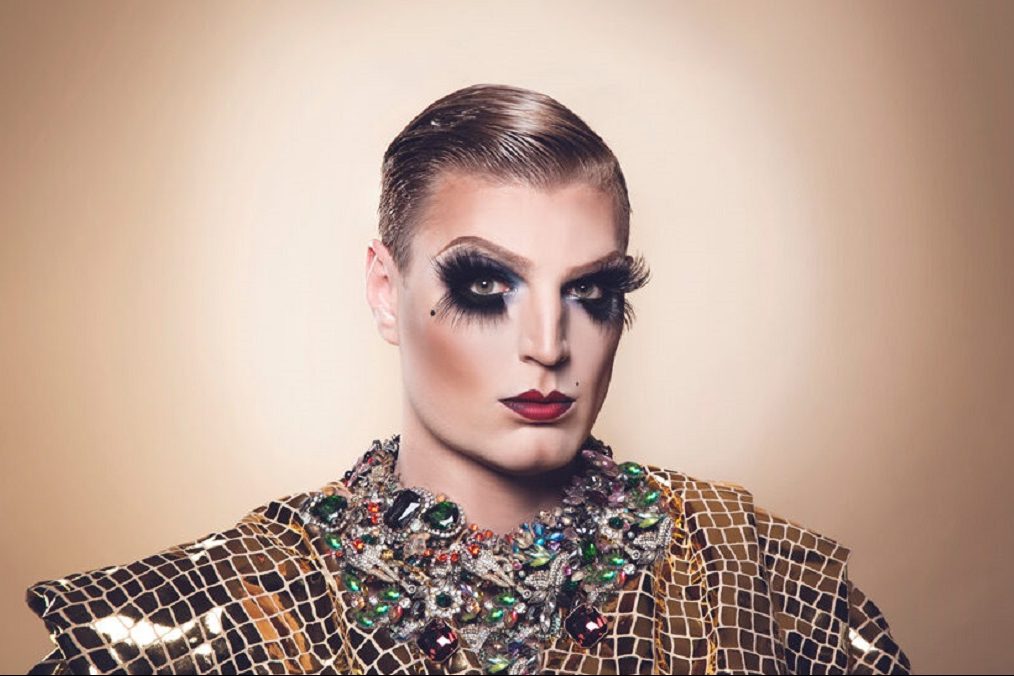
Opera / “Anna Bolena” (Anne Boleyn) by Gaetano Donizetti, Sydney Opera House, until July 26. Reviewed by HELEN MUSA.
OPERA Australia artistic director Lyndon Terracini says opera has to change with the times, and the world premiere of a brand new production of Donizetti’s “Anna Bolena”, by Italian director Davide Livermore, signals a move into the digital age that viewers better get used to.
It’s a mystery as to why “Anna Bolena” is not seen more often. After all, it was a favourite of divas Maria Callas and Joan Sutherland, and in 1830, was the first big hit for Donizetti, written in just one month.
It is also one of three operas by the composer set in the Tudor era, so Opera Australia has secured the services of Livermore, who directed the company’s flashy “Aida” last year, to stage a trilogy which will also includes Roberto Devereux (Robert Devereux, or the Earl of Essex) and Maria Stuarda” (Mary Stuart).
“Anna Bolena” has a lot going for it. It has a sympathetic tragic heroine and a mad scene, which is clearly the prototype for Donizetti’s mad scene in Lucia di Lammermoor – it can hardly go wrong.

Additionally, there is a line-up of fascinating, conflicted characters in the secondary roles, giving scope to emerging artists.
Musically this production is exciting and varied, with the female section of the Opera Australia chorus, sombrely clad by costume designer Mariana Fracasso, underscoring the action with quiet, powerful singing.
Albanian soprano Ermonela Jaho is celebrated for her passionate coloratura singing, and her superb Act II duet, with Carmen Topciu as Jane Seymour, was a moment to cherish. It was a stunning clash of personalities and voices. But as the doomed Anne Boleyn, Jaho seemed too delicate for the part and was at her best in the quieter moments.
Not so was Teddy Tahu Rhodes who played a fiery, swashbuckling King Henry VIII, with white teeth flashing he was pleased at his own cleverness. In the deeper register of this bass part, however, his articulation was slightly distorted.
But it is the secondary roles in “Anna Bolena”, which bring this opera to life.
First among these is the trousers role of Mark Smeaton, the lovesick musician who betrays Anna, a gift to mezzo soprano Anna Dowsley, who sings the besotted Smeaton’s part forcibly, while expressing the mixed emotions of jealousy and guilt to the part.
Carmen Topciu’s powerful voice lends credit to her part as Henry’s mistress and future queen, Jane Seymour, while Richard Anderson as Lord Rochfort (George Boleyn) and John Longmuir as Sir Hervey, bring gravitas to the nasty, politically motivated machinations of the plot.

The most thrilling surprise of the night was Leonardo Cortellazzi, as Anne’s former lover Lord Henry Percy. He was a natural on stage and blessed with an exquisite tenor voice, which I hope I will hear again.
But alas, until I know how high-technology works best in opera, discussion of the directing will inevitably swamp the consideration of the music, a pity, since it is music which lies at the heart of opera.
The evening got off to a rocky start as the extended overture, an excuse for a mystifying mime, involved digital images of 21st-century Swinging England, with hip girls in futuristic dresses moving around the stage in pursuit of what looked like a Tudor rose.
A jarring element was the use of these female dancers not just in the opening but interspersed randomly, pretending to be making their bodies into the shape of horses and a harp, and even putting their heads on the chopping block — this intervention did not work.
The set is composed of floor-to-ceiling LED panels, with a moving platform/staircase by Gio Forma in front of them.
Multi-media collaborator D-Wok’s scenic “painting” was done with a great deal more restraint than in last year’s “Aida”, although the recurrent image of birds, butterflies and insects crawling across the backdrop, presumably feasting on the excrement of Henry’s court, was distracting in the extreme – I kept trying to count the number of legs. I speculates that the use of this use of digital symbolism will evolve with time.
But many of D-Wok’s “backdrops” were most effective, as in the magnificent autumnal hunting scene and the majestic judgement hall, grand and overwhelming. Here the new technology combined with the old to serve the production of an opera the audience needed to see.
Who can be trusted?
In a world of spin and confusion, there’s never been a more important time to support independent journalism in Canberra.
If you trust our work online and want to enforce the power of independent voices, I invite you to make a small contribution.
Every dollar of support is invested back into our journalism to help keep citynews.com.au strong and free.
Thank you,
Ian Meikle, editor




Leave a Reply